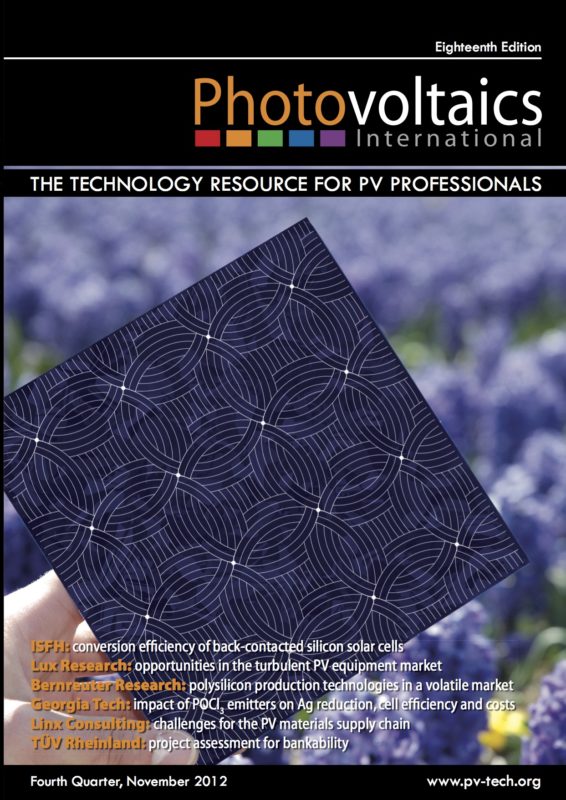By Felix Haase, Institute for Solar Energy Research Hamelin (ISFH); Sarah Kajari-Schröder, Head of the Silicon Thin-Film Research Group, Institute for Solar Energy Research Hamelin (ISFH); Renate Winter, Institute for Solar Energy Research Hamelin (ISFH); Martin Nese, Co-Founder, EPISUN AS; Rolf Brendel, Scientific Director, Institute for Solar Energy Research Hamelin (ISFH) , Institute for Solid State Physics, Leibniz Universität Hannover
Reducing the cost of photovoltaic energy is the main objective of solar cell manufacturers. This is ideally realized by increasing cell efficiency and simultaneously decreasing manufacturing cost. To reduce fabrication costs, the international roadmap of photovoltaics (ITRPV) forecasts a reduction in cell thickness from 180μm to 120μm in the next six years, and even thinner cells may be desirable, as long as efficiency and yield are not negatively affected. In order to increase efficiency, the ITRPV forecasts an increase in share of back-contacted cells from 5% to 35% in the next eight years. In this paper the dependence of the efficiency of back-junction back-contact (BJBC) solar cells on cell thickness is investigated experimentally and numerically. To this end, BJBC silicon solar cells with cell thicknesses ranging from 45μm to 290μm are fabricated and simulated. Thinned float-zone material is used as well as monocrystalline epitaxial layers fabricated by the porous silicon process for 45μm-thick cells. The efficiency of the best cell is 22.6% (130μm cell thickness) and 18.9% for an epitaxial cell (45μm thickness). Loss mechanisms in the maximum power point of all cells are investigated by using a freeenergy loss analysis based on finite-element simulations. A lower generation and a lower recombination in thinner cells compete against each other, resulting in a maximum efficiency of 20% for a cell thickness of 45μm at a base lifetime of 20μs. At a base lifetime of 3000μs, the maximum efficiency is greater than 23% for a cell thickness beyond 290μm, but reducing the cell thickness from 290μm to about 90μm results in a power loss of less than 0.6% absolute.



